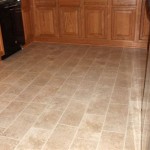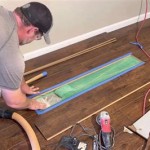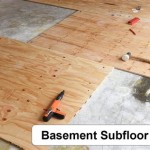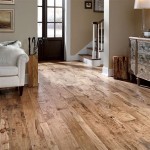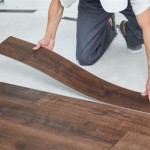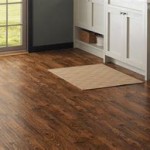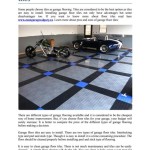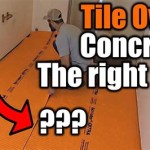Why Particle Board Over Plywood Subfloor: Essential Considerations
When installing flooring, the choice between particle board and plywood subfloors can be a crucial decision. While both materials have their advantages and disadvantages, understanding the key differences between them will help you make an informed choice based on your specific needs.
Advantages of Particle Board Subfloors
- Cost-effectiveness: Particle board is generally more affordable than plywood, making it a budget-friendly option for flooring projects.
- Easy to install: Particle board panels are lightweight and easy to cut and work with, reducing installation time and effort.
- Smooth surface: Particle board provides a smooth and level surface, creating a solid foundation for flooring materials.
Disadvantages of Particle Board Subfloors
- Moisture susceptibility: Particle board can be susceptible to moisture damage and may warp or deteriorate in areas with high humidity or frequent spills.
- Lower strength: Compared to plywood, particle board has lower strength and is more prone to cracking or breaking under heavy loads.
- Environmental concerns: Particle board is typically made from wood waste products and may contain adhesives that release formaldehyde, a potential health hazard.
Advantages of Plywood Subfloors
- Durability: Plywood is a strong and durable material that is resistant to moisture damage, warping, and cracking.
- Stability: Plywood is made from multiple layers of wood veneers glued together, creating a stable and uniform surface.
- Flexibility: Plywood is available in various thicknesses and grades, providing options for different flooring needs and load requirements.
Disadvantages of Plywood Subfloors
- Higher cost: Plywood is generally more expensive than particle board, especially for thicker and higher-quality grades.
- Heavier weight: Plywood panels are heavier than particle board, making them more difficult to transport and install.
- Rougher surface: Plywood has a rougher surface than particle board, which may require additional sanding or underlayment before flooring installation.
When to Use Particle Board Subfloors
- Budget-conscious flooring projects
- Areas with low moisture exposure
- Light-weight flooring materials
When to Use Plywood Subfloors
- High-traffic areas
- Areas with potential moisture exposure
- Heavy flooring materials
- Structural stability concerns
Conclusion
The decision between particle board and plywood subfloors depends on the specific requirements of your flooring project. If cost and ease of installation are primary concerns, particle board may be a suitable option. However, for durability, moisture resistance, and high-load capacity, plywood is the better choice. By considering the advantages and disadvantages of each material, you can make an informed decision that will ensure a sturdy and long-lasting flooring installation.

Subfloor Options Osb Vs Particle Board New Floors Inc

Particle Board Underlayment Pros Cons And Cautions Home Efficiency Guide

Particle Board As A Flooring Solution

Why Particle Board Subfloors Are Bad Chris Loves Julia

Subfloor Options Osb Vs Particle Board New Floors Inc
What Happens If You Use A Particle Board As Subfloor Quora

Why Particle Board Subfloors Are Bad Chris Loves Julia

Subfloor Options Osb Vs Particle Board New Floors Inc

Why Particle Board Subfloors Are Bad Chris Loves Julia

New Plywood Vs Existing Particle Board For Ceramic Tile Doityourself Com Community Forums
See Also
